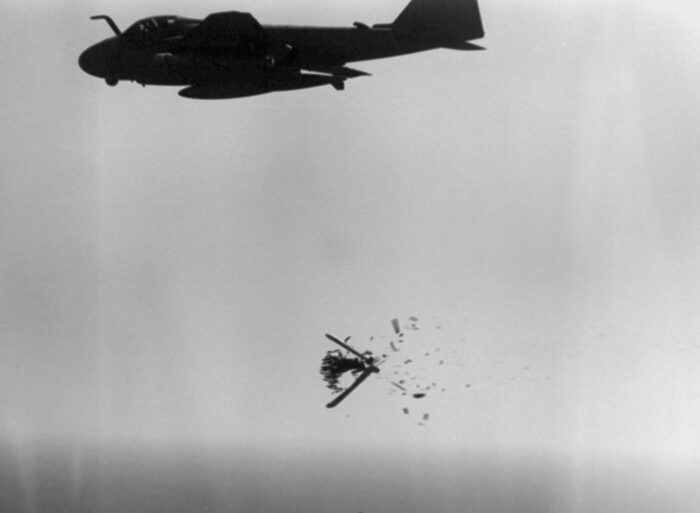Cluster Bombs and Thermobaric Weapons have been in the recently in the news ever since the Russain invasion of Ukraine began on the 24th of Febrary 2022.
As per various news sources, these weapons have been deployed in such large numbers by the Russians that they have been causing massive civilian casualties in Ukrainian cities.
Just what are Cluster munitions and Thermobaric weapons? What makes them so destructive is that normal conventions of wars prevent their arbitrary usage? All of this will be elaborated upon this article within the context of the IAS Exam.
Cluster Bombs and Thermobaric Weapons-Download PDF Here
What are Cluster Bombs?
Cluster bombs (also known as Cluster munitions) are a type of explosive weapons either launched from air or ground. It releases smaller munitions or explosive bomblets designed to kill enemy personnel or destroy vehicles over a large area. It can be explosive, chemical or biological in nature.
Cluster bombs pose a high risk to civilian as its effects is spread over a wide area. Even if military targets are bombed with precision, civilian infrastructure nearby will also be hit. Unexploded bomblets can kill or maim civilians even after a conflict has ended.
The use of Cluster bombs are prohibited as per the Convention on Cluster munitions adopted in Dublin Ireland in 2008. After ratification it entered into force on 1st August 2010. As of February 2022, a total of 123 states have joined the Convention, as 110 states parties and 13 signatories.
What are Thermobaric weapons?
A thermobaric weapon (also known as an aerosol bomb or Fuel Air Explosive) is a type of weapon the used the oxygen in the surrounding environment to generate a high-temperature explosion. The fuel -air explosive (FAE) is the most widely-used and well known variant of thermobaric weapons.
What makes Thermobaric weapons different from conventional explosive weapons is that the former consists of 100%fuel while the latter is 25% fuel and 75% oxidizer. Thermobaric weapons are mainly used against field fortifications like tunnels, bunkers etc. It is capable of dealing large scale destruction in a wide area.
How do Cluster Munitions work?
When cluster bombs are dropped from an aircraft or launched from the ground, the missile in question opens up midair to release small bomblets. Usually the altitude at which the bomb opens up is between 330 ft and 3,300 ft. How large or small the area of impact will be will depend upon the height, velocity and rotation speed.
An example of a cluster munition being dropped from an aircraft. As seen in the picture, multiple submunitions are being released from a large bombshell.

How do Thermobaric Weapons work?
The difference between condensed explosive and thermobaric explosive is that while the condense variant uses oxidation to produce an explosion from a single source, a thermobaric bomb uses pressure from within the fuel and oxidant mixture as well as the surrounding air to produce an explosion.
A typical weapon consists of a container packed with a fuel substance, the center of which has a small conventional-explosive “scatter charge”. Fuels are chosen on the basis of the exothermicity of their oxidation, ranging from powdered metals, such as aluminum or magnesium, to organic materials, possibly with a self-contained partial oxidant.
A thermobaric bomb’s effective yield depends on a combination of a number of factors like how well the fuel is dispersed, how rapidly it mixes with the surrounding atmosphere and the initiation of the igniter and its position relative to the container of fuel.
Facts about Cluster Munitions and Thermobaric Weapons
- One cluster bomb contains hundreds of bomblets (or submunitions) and typically scatters them across an area the size of two to four football fields
- Bomblets are small, often the size of a ‘D’ battery or a tennis ball and have a failure rate of up to 30 percent; unexploded bomblets become de facto landmines
- The United States stockpile contains at least 730 million submunitions
- Thermobaric and fuel–air explosives have been used in guerrilla warfare since the 1983 Beirut barracks bombing in Lebanon, which used a gas-enhanced explosive mechanism that was probably propane, butane, or acetylene.
- International law does not specifically prohibit the use of thermobaric munitions, fuel-air explosive devices, or vacuum bombs against military targets. Their use against civilian populations may be banned by the United Nations (UN) Convention on Certain Conventional Weapons (CCW), however they are not explicitly listed.
Frequently Asked Questions about the Cluster Bombs and Thermobaric Weapons
Are cluster bombs illegal?
Does India have cluster bombs?
What are thermobaric weapons used for?
To know more about other Government Exams, visit the linked article. For more preparation materials they can refer to the links given in the table below:
Comments